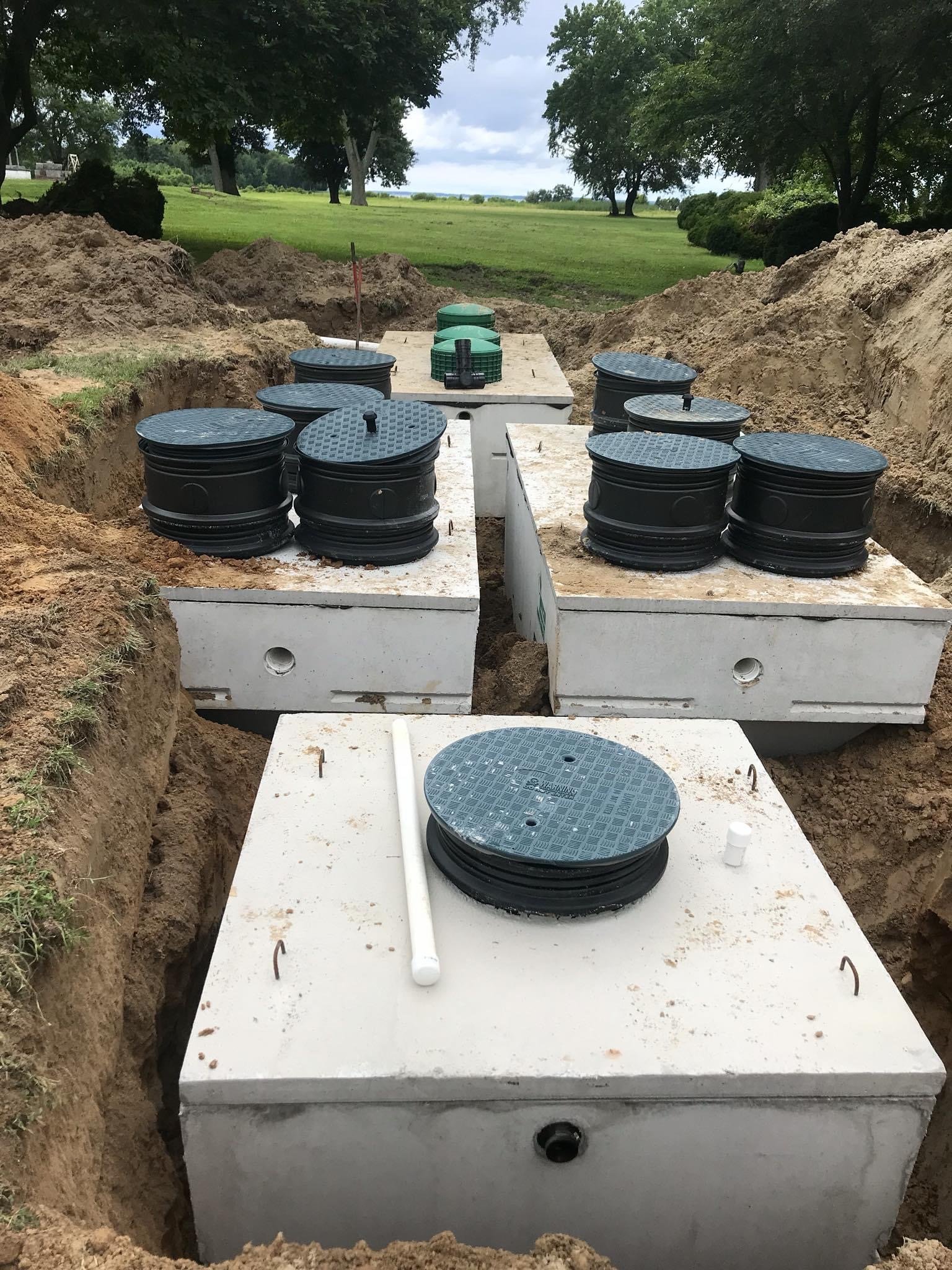The Single Strategy To Use For Stillwell Septic And Grading
Stillwell Septic And Grading - Truths
Table of ContentsStillwell Septic And Grading Fundamentals Explained5 Easy Facts About Stillwell Septic And Grading ShownAll about Stillwell Septic And GradingThe Facts About Stillwell Septic And Grading UncoveredA Biased View of Stillwell Septic And GradingHow Stillwell Septic And Grading can Save You Time, Stress, and Money.About Stillwell Septic And Grading

Home owners must also educate themselves on the essentials of septic systems to ensure they make notified choices throughout the installment process - Septic Installers. Septic tanks are a necessary part of lots of homes that are not connected to a local drain system. They are designed to treat and take care of house wastewater on-site
The septic storage tank is a huge, below ground container made of concrete, fiberglass, or plastic. The tank divides the solid waste from the liquid waste.
The Basic Principles Of Stillwell Septic And Grading
Along with regular upkeep, property owners must additionally be mindful of what they flush down their drains. Products such as oil, oil, coffee premises, and womanly hygiene items can obstruct the system and trigger back-ups. It is additionally vital to conserve water and avoid overloading the system. Simple steps such as repairing leaky taps and toilets, installing low-flow showerheads and commodes, and expanding washing tons can aid reduce water use and extend the life of the septic tank.
The topography of the site is also reviewed to guarantee that the septic tank is installed at the proper altitude. https://www.edocr.com/v/poewgvbe/georgebraden29910/stillwell-septic-and-grading. The system must be set up at a higher elevation than the surrounding area to stop contamination of the surrounding environment. Obstacles are the minimum ranges required by law between the septic system and various other frameworks or functions such as wells, structures, and building lines
The elevations will certainly make sure that the septic system functions effectively, and wastewater is effectively treated. It ensures that the septic system is installed in the most optimum place, taking right into factor to consider the dirt, topography, and obstacles.
A Biased View of Stillwell Septic And Grading
Before installing a septic tank, property owners require to obtain permits and comply with policies. Some of the authorizations and laws that property owners require to consider include:: Property owners need to get a license from the regional wellness department or structure department before mounting a septic system.
For example, some communities might require a minimal lot dimension for septic system installation.: House owners need to comply with ecological guidelines when mounting a septic system. Some states may require an ecological impact evaluation before installing a septic system.: Homeowners need to conform with building policies when mounting a septic system.
The smart Trick of Stillwell Septic And Grading That Nobody is Talking About
As an example, some towns might call for periodic inspections and pumping of the septic system. Non-compliance with permits and regulations can lead to penalties, charges, and also lawsuit. Therefore, it is important for property owners to acquire authorizations and comply with laws prior to installing a septic system. When it pertains to picking a sewage-disposal tank, house owners have a couple of options to take into consideration.
Among the most essential variables to think about when choosing a sewage-disposal tank is the size. A sewage-disposal tank that is also little for the home's requirements will need more frequent pumping, while a storage tank that is also huge can result in extreme water buildup and potential system failure. A general guideline browse this site is that the container needs to have the ability to hold a minimum of 2 days' well worth of wastewater.
Stillwell Septic And Grading Things To Know Before You Get This

Plastic tanks are budget-friendly and lightweight, yet they may not be as sturdy as other products and can be prone to fracturing. It's additionally vital to take into consideration the sort of system the septic tank will certainly be used with. There are two major kinds of septic tanks: gravity and pressure. Gravity systems rely upon the all-natural flow of wastewater to relocate through the system, while pressure systems utilize a pump to relocate wastewater through the system.
The Stillwell Septic And Grading PDFs
Overall, selecting the right septic tank for a home is an essential decision that requires careful factor to consider. Prior to setting up a septic container, homeowners should take particular actions to prepare for the installation procedure.
Right here are some vital security steps to follow: Put on safety gear: Home owners have to use protective equipment, such as gloves, boots, and headgears, to stop injury throughout the setup procedure. Stay clear of electric lines: House owners should stay clear of excavating near electrical lines to avoid electrocution. Usage care when running heavy machinery: Homeowners need to use caution when running hefty equipment to protect against mishaps and injuries.
Stillwell Septic And Grading - Questions
By complying with these necessary actions, homeowners can ensure a successful sewage-disposal tank setup procedure. Septic tank installation is an essential process that needs cautious planning and execution. House owners that are installing a septic system for the first time must be conscious of the essential steps associated with the procedure to make certain that their septic tank operates successfully and efficiently.
